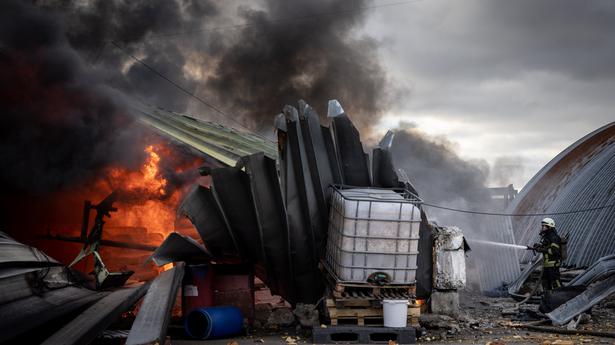
Explained | Chemical and biological weapons: what international regulations bind Russia?
The Hindu
The country had signed the Chemical Weapons Convention in 1997, agreeing to destroy its stockpile of chemical weapons
The story so far: United States National Security Advisor Jake Sullivan on March 16 warned the Secretary of Russia's Security Council, Nikolay Patrushev, of the consequences if the country decides to use chemical or biological weapons in Ukraine.
Last week, U.S. President Joe Biden vowed that Russia would pay a "severe price" if it used chemical weapons in Ukraine. Besides, brushing off Moscow’s claims about the U.S. having chemical and biological weapons labs in Ukraine as “preposterous”, the White House had also warned that Russia might engage in “false flag” chemical and biological attacks in Ukraine.
Chemical weapons are toxins or chemical substances deployed using types of munition such as artillery shells or grenades to harm, cause sensory irritation or death. The use of such weapons in geopolitical conflicts started during World War I when commercial chemicals such as Chlorine, phosgene (a suffocating gas) and mustard gas (which can cause skin burns) were used by both sides.
In 2017, Syrian President Bashar-al-Assad’s regime was condemned for allegedly having its air force drop bombs of the highly-toxic Sarin nerve agent, along with chlorine bombs on civilian areas which resulted in multiple deaths. However, both the Syrian government and its military-ally Russia, maintained that no chemical weapons were used.
Besides, Russia has been accused of using chemical and life-threatening nerve agent, Novichok, against two of its own nationals — in the attempted assassinations of former KGB officer Sergei Skripal and his daughter in 2018, and Russian opposition leader Alexei Navalny in 2020. Both Russia and the U.S. maintained high stockpiles of chemical weapons during the Cold War.
Biological weapons, meanwhile, are disease-causing organisms such as viruses, bacteria or other toxins produced and released deliberately to infect or cause death to humans. Biological agents like anthrax, smallpox, plague and others were some of the common toxins experimented by countries during and after World War I.
During the war, Germany was reportedly involved in a secret program to infect horses and cattle of Allied armies with viruses. There are documented instances of the Japanese testing biological warfare agents including bubonic plague, anthrax and typhus on human subjects and Allied prisoners of war, claiming several lives. During the second World War, the United States and United Kingdom, Germany and Russia were known to have Research and Development facilities to study biological agents.

The Congress government including controversial farm legislations that had been brought in and later withdrawn by the BJP-led government at the Centre as the reference points for the Karnataka Agriculture Prices Commission (KAPC) has ruffled the feathers of farmers’ leaders and agricultural economists who had expressed their ideological support to the Congress.












